Are you aware that the International Space Station is in a state of constant descent? Also, it might interest you to know that we’re presently traveling through space at a standard speed of 514495.347 miles per hour?
Ancient cultures such as the Chinese and Greeks gazed up at the sky in wonder, racking their brains to figure out what was going on up there. They made remarkable discoveries, but we really stepped up our efforts in the twentieth and twenty-first centuries as technology evolved.
Today, we’ll look at some of the most significant discoveries and best scientific breakthroughs that made us realize our solar system is even more impressive than we could ever imagine.
Here are 25 Insanely Cool Facts About the Solar System.
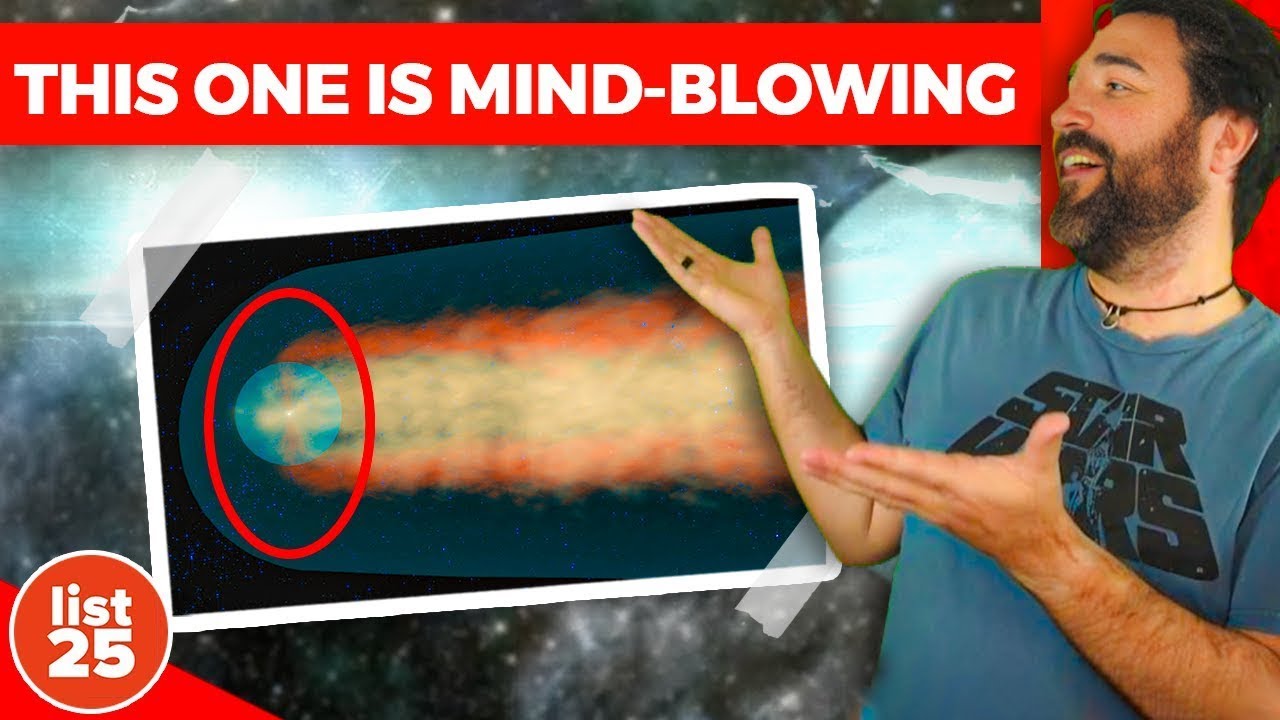
Pluto's Heart
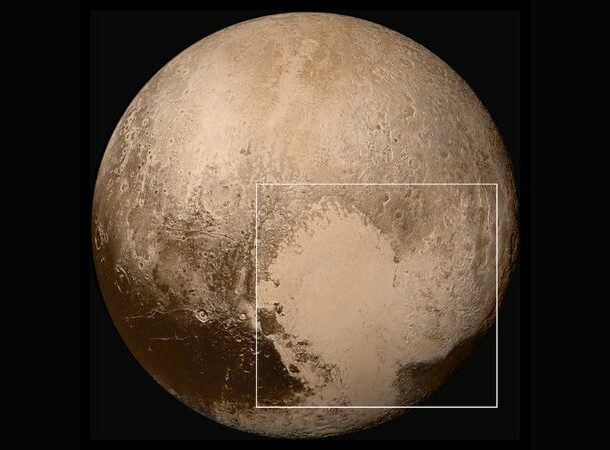 https://www.sciencedaily.com/releases/2020/02/200204112548.htm#:~:text=Pluto's famous heart-shaped structure,world scientists thought it was.
https://www.sciencedaily.com/releases/2020/02/200204112548.htm#:~:text=Pluto's famous heart-shaped structure,world scientists thought it was. We launched the New Horizons space probe on January 19,2006. It was the first aircraft to explore Pluto and the Kuiper Belt up close, bringing us images of the dwarf planet we couldn’t imagine in our wildest dreams. Chief among those was Pluto’s Heart – a surprisingly smooth, crater-free plain.
Astronomers believe it’s a “very young” region that was active within the last 100 million years – less than a heartbeat regarding celestial timelines.
The frozen plains of Pluto are teeming with planetary oddities. Some areas resemble cracked mudflats, while others are unusually hilly. Troughs run through the area, with something dark oozing from beneath to fill the seams.
So, what’s the deal with Pluto’s terrain? We’re not really sure yet. It could all be due to convection or a contracting crust. Pluto’s surface might be cracking and chipping under the pressures of shifting materials, similar to dry paint.
Hubble Space Telescope
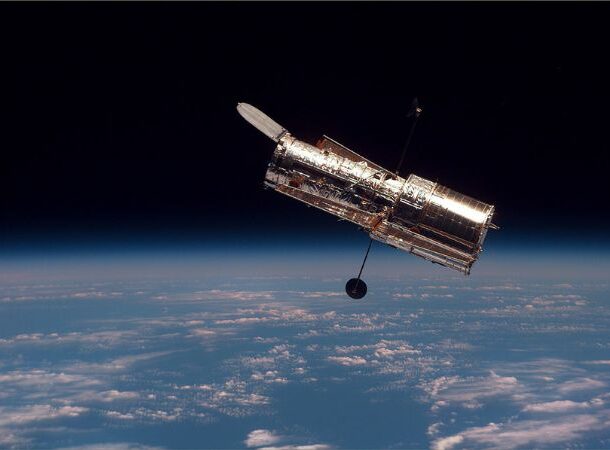 https://science.nasa.gov/mission/hubble/multimedia/online-activities/interactive-orbiting-hubble/
https://science.nasa.gov/mission/hubble/multimedia/online-activities/interactive-orbiting-hubble/ The Hubble Space Telescope has become one of the world’s busiest telescopes. Despite being the size of a school bus, it has looked at areas more than 13,4 billion light years away, meaning that it has seen the light that was present in the cosmos 13.4 billion years ago.
Hubble’s low-Earth orbit, where it travels at 17,000 miles per hour, likewise keeps it within an accessible and safe range for astronauts, who have used the space shuttle on multiple occasions to visit the instrument to make repairs and improve its various parts over the years.
Hubble is currently 326 miles above the Earth’s surface.
A Block Of Lead On Venus Would Melt Like A Block Of Ice On Earth
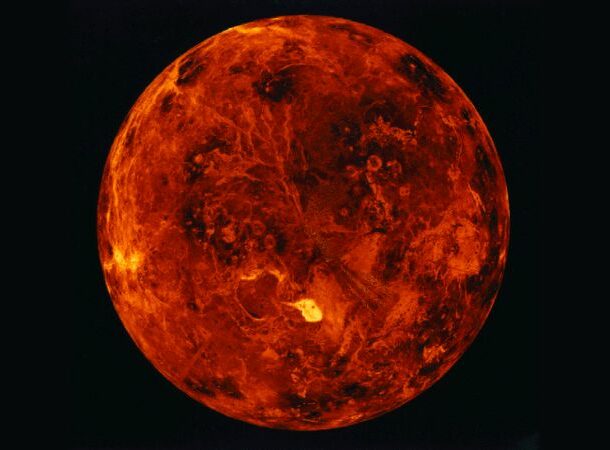 https://www.theatlantic.com/science/archive/2017/01/venus-lost-generation/513479/
https://www.theatlantic.com/science/archive/2017/01/venus-lost-generation/513479/ That is the truth. Its surface is hot enough to melt lead and has sulfuric acid clouds at 860 degrees Fahrenheit or 460 degrees Celsius.
But Venus may have been capable of supporting life at one point in its existence. Over 4 billion years ago, Venus had oceans. In fact, the planet had water for more than 2 billion years. Today, Venus is extremely dry, with very little water vapor. All of it was destroyed by the Sun’s solar wind.
Space Junk Can Move At More Than 17,500mph
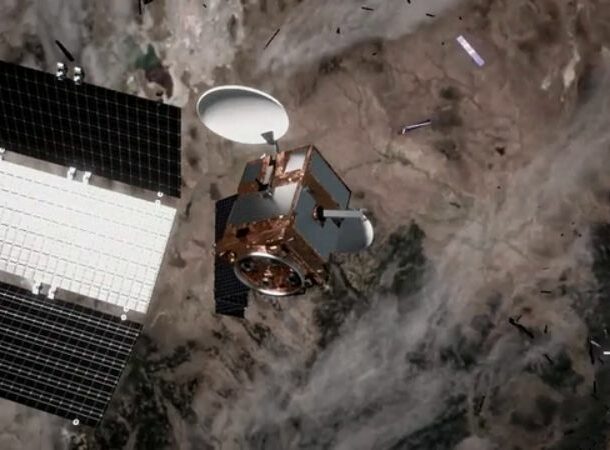 https://spacenews.com/tracking-debris-and-space-traffic-a-growing-challenge-for-u-s-military/
https://spacenews.com/tracking-debris-and-space-traffic-a-growing-challenge-for-u-s-military/ The US Air Force has a dedicated team on hand that has been monitoring and tracking space junk since the 1980s. They’re currently monitoring more than 47,000 individual objects as big as your hand, and over 600,000 that’s about the size of marbles – and that figure grows on a daily basis.
Every single one of these objects is hurtling through space at speeds of 17,500 mph (28,000 kmh). If any of them collided with another object, whether a spacecraft, debris or the ISS, the outcome would be disastrous. Even something as small as a 1-32 inch piece of metal could cause substantial damage to spacecraft or obliterate a crew member during a space walk.
It Takes Sunlight About 8 Minutes To Reach The Earth
 https://phys.org/news/2013-04-sunlight-earth.html#:~:text=We orbit the Sun at,This is an average number.
https://phys.org/news/2013-04-sunlight-earth.html#:~:text=We orbit the Sun at,This is an average number. The energy in the rays of sunlight we see today developed in the Sun’s core 30,000 years ago – which means that the light we see now is 30 thousand years old! Imagine that.
After leaving the Sun, the light spent the majority of its time passing through the dense atoms that make up the Sun, and it took only 8 minutes and 20 seconds to reach us after its departure.
The International Space Station (ISS) Is Falling
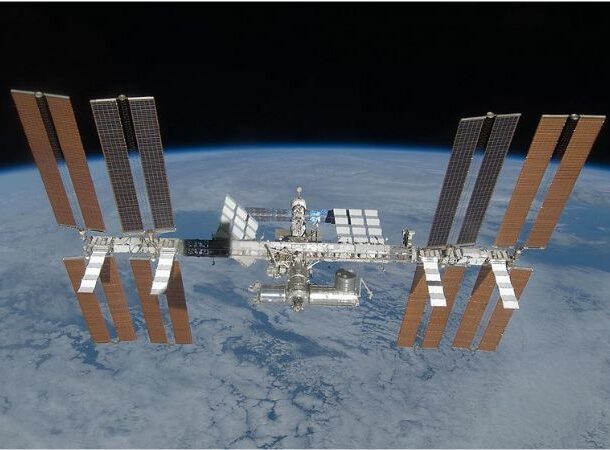 https://www.nasa.gov/audience/forstudents/5-8/features/nasa-knows/what-is-microgravity-58.html
https://www.nasa.gov/audience/forstudents/5-8/features/nasa-knows/what-is-microgravity-58.html Contrary to popular belief, gravity exists in space. The International Space Station can be found between 200 and 250 miles above the Earth, where gravity is approximately 90% that of Earth. This is enough to bring the ISS slamming into the planet. So, what’s keeping it from falling?
Well, actually, it IS falling. However, it does not crash into the Earth because the speed at which it falls is nearly equal to the rate at which it orbits the planet, so it simply falls along the Earth’s curve. So the ISS is falling around the Earth – and it’s the same with the moon. It is also falling around Earth.
The ISS’s fall is the very reason astronauts on board appear weightless despite the presence of gravity inside. The astronauts aren’t pulled in any particular direction because the velocity at which the ISS falls is basically equal to the rate at which it moves around the Earth. As a result, they simply float. How cool is that?
It Would Take 177 Years To Drive To The Sun
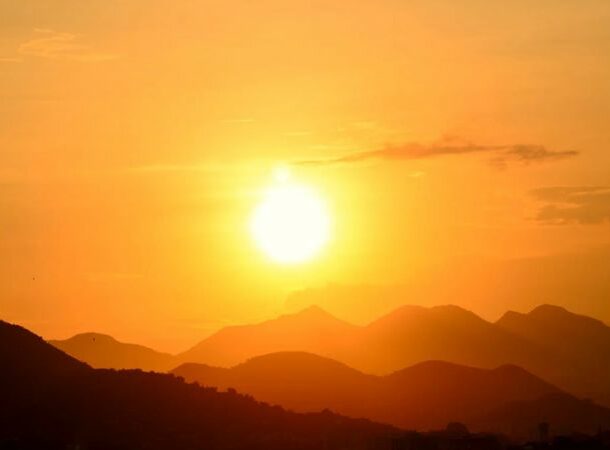 https://www.skyatnightmagazine.com/space-science/how-long-does-take-get-sun#:~:text=Depending on your preferred method,8 minutes and 20 seconds.
https://www.skyatnightmagazine.com/space-science/how-long-does-take-get-sun#:~:text=Depending on your preferred method,8 minutes and 20 seconds. Not that we’d live long enough to actually try it – but if you decided to drive a car to the Sun at, say, 60 miles per hour, it would take you over 177 years to complete the journey.
You could also decide to go via plane, in which case it would take 19 years to reach the Sun – or you could walk there. It would only take 3,536 years if you can keep a steady pace at 3 mph (4.8 kph).
We’ve Sent Messages Into Space For Extraterrestrial Civilizations
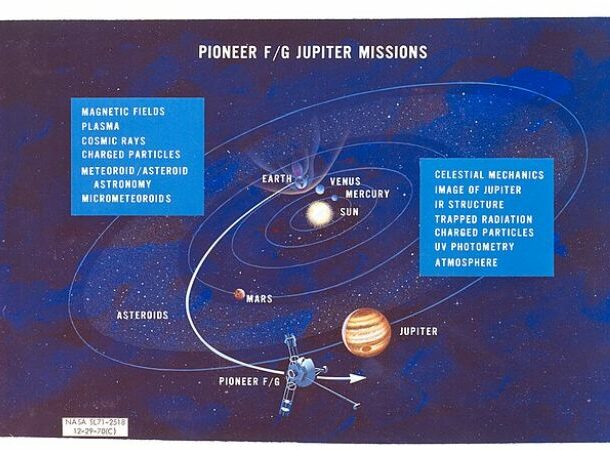 https://www.smithsonianmag.com/science-nature/what-is-on-voyagers-golden-record-73063839/#:~:text=The “Golden Record” would be,NASA approved the idea.
https://www.smithsonianmag.com/science-nature/what-is-on-voyagers-golden-record-73063839/#:~:text=The “Golden Record” would be,NASA approved the idea. While I did open this list by saying we made a lot of technological advances, I did not necessarily say that we became smarter over the past century or 3…
In the early 1970s, NASA launched Pioneer 10 and 11 to explore the outer reaches of our solar system. Apart from the scientific instruments, astronauts also included a message to any extraterrestrials the craft might meet along the way. The Pioneer Plaque displayed diagrams of the universe, a schematic of hydrogen, and, perhaps most interestingly, images of naked individuals – don’t ask me why they thought that made sense. Identical plaques adorned both spacecraft.
The extraterrestrial communication trend continued in 1977 with NASA’s Voyager 1 and 2 probes. This time, gold-plated gramophone records, 12 inches each, encoding sounds of nature, languages, diverse images, and music to encapsulate Earth’s essence were placed in both crafts. The cover of the records was inscribed with a lot of the same images as the Pioneer Plaque, except that NASA decided to pass on the nude man and woman since it upset so many people the first time around.
Neutron Stars Are Spinning At Incredible Speeds
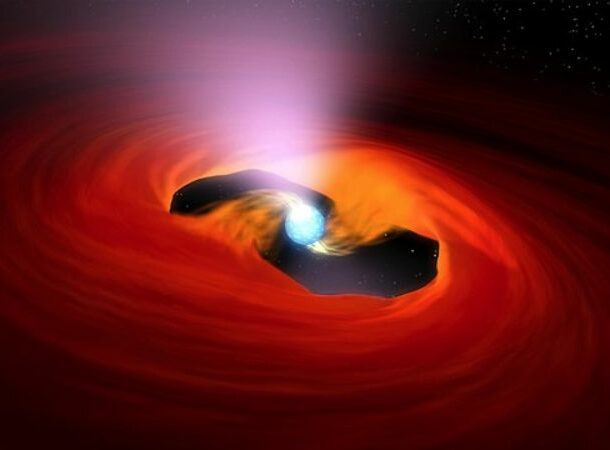 https://astronomy.swin.edu.au/cosmos/n/neutron+star#:~:text=The result is that neutron,over 600 times per second!
https://astronomy.swin.edu.au/cosmos/n/neutron+star#:~:text=The result is that neutron,over 600 times per second! A neutron star is what remains after a star goes supernova. They are incredibly small and dense neutron balls that are truly remarkable. When neutron stars are born, they can rotate at least 60 times per second. The rotation rate can reach over 600 times per second if they are part of a binary system!
Because of their extreme density, any atoms that touch them get torn apart almost instantly. At the same time, any remaining subatomic particles are dispersed before being “rearranged” into neutrons. This process yields so much energy that a meeting between a relatively small asteroid and a neutron star would produce a gamma-ray explosion with more punching power than our sun will deliver throughout its lifetime. Consequently, any neutron star that comes even close to our solar system poses a real danger of causing lethal radiation damage to the Earth.
The Stars Are (probably) Uncountable
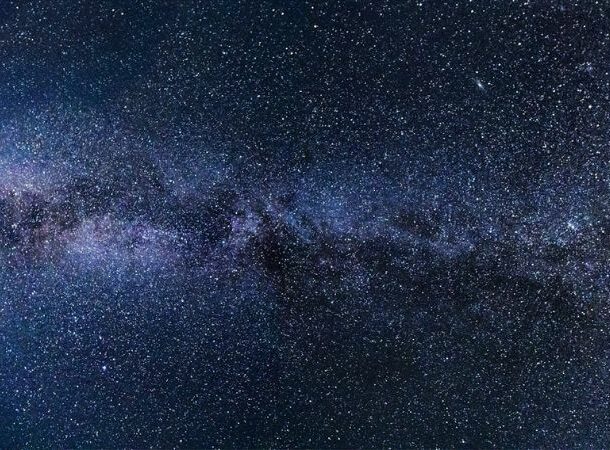 http://scienceline.ucsb.edu/getkey.php?key=1123
http://scienceline.ucsb.edu/getkey.php?key=1123 According to NASA, there are zillions of uncountable stars. And no, a zillion is not just a fun term kids use – it is actually the name for any uncountable amount. Who knew?
However, according to the other competent star enumerators (that’s a fun word to say), there could be about 3 thousand million billion stars. That’s a 30, with 15 zeros behind it!
Planets Are Made Of Rock or Gas
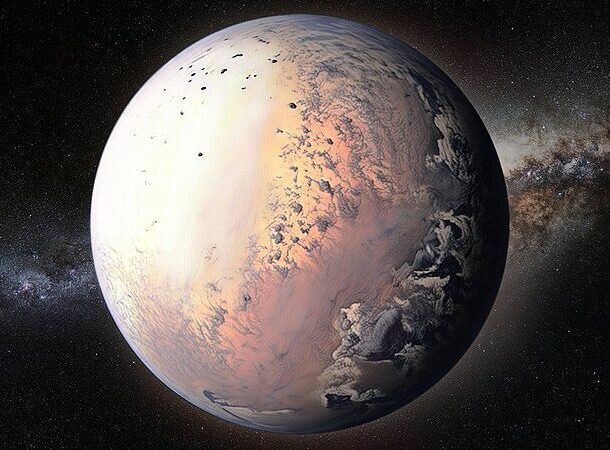 https://www.khanacademy.org/humanities/big-history-project/solar-system-and-earth/earth-and-form-solar-system/a/how-our-solar-system-formed#:~:text=The planets are of two,and composed mostly of gases.
https://www.khanacademy.org/humanities/big-history-project/solar-system-and-earth/earth-and-form-solar-system/a/how-our-solar-system-formed#:~:text=The planets are of two,and composed mostly of gases. Terrestrial planets, as you might have guessed, are composed of rock or metals and possess a solid surface – if we are determined enough, we can probably land on them. Mercury, Venus, Earth, and Mars are all terrestrial planets.
Gas Giants, on the other hand, are entirely made of gas. No amount of determination will change the fact that if we were to try and land on one of these gas puppies, we’d probably sink into the planet, towards their magnetic cores, and will most likely be crushed by thousands of cubic tons of pressure if we’re not torn apart by hurricane-level winds first (a common side-feature).
The gas giants include Jupiter, Saturn, Neptune and Uranus.
But, scientists propose that there could be a third type of planet, a Chthonian (k-thone-ian) planet, which is the result of a Gas Giant getting too close to its sun. Its atmosphere would evaporate, leaving only its core behind, naked to the eye of the cosmos.
However, we have yet to discover such a planet, so for now, it remains theoretical.
It’s Hard To Define A Planet
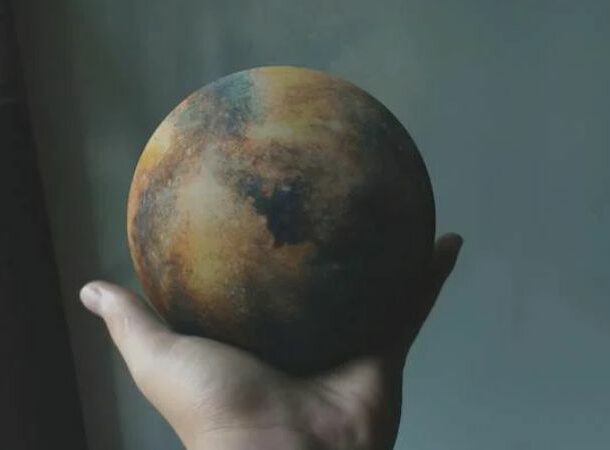 https://science.nasa.gov/solar-system/planets/what-is-a-planet/
https://science.nasa.gov/solar-system/planets/what-is-a-planet/ It might be hard to believe, but our brightest minds can’t agree on defining a planet.
The current criteria say a celestial body can only be a planet if:
- It orbits the sun
- It’sIt’s spherical
- It should have cleared it’sit’s orbit of other bodies
The problem is that the definitions need to be broadly applied, leading to a massive rift in the world of astronomy.
The idea of defining a planet simply as a natural object in space with a mass sufficient to make it roughly spherical is one idea. A simple definition, however, does not include the degree of roundness an object must possess to be considered round. The criteria will be updated again in the future, but for the moment, thousands of IAU members remain disgruntled about the definition.
We Are Moving Through Space At Hundreds Of Thousands Of Miles Per Hour
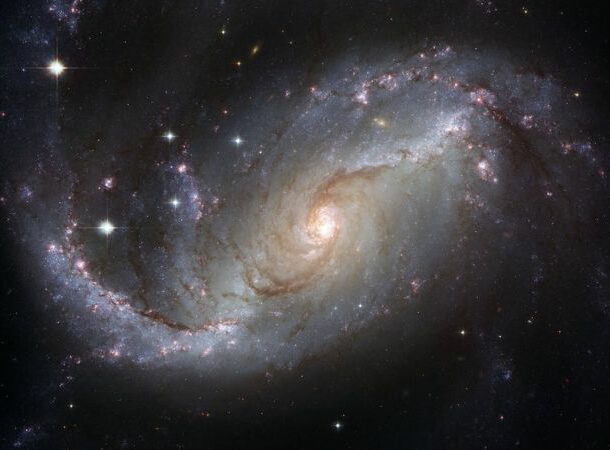 https://starchild.gsfc.nasa.gov/docs/StarChild/questions/question18.html#:~:text=Yes%2C the Sun - in fact,Way is a spiral galaxy.
https://starchild.gsfc.nasa.gov/docs/StarChild/questions/question18.html#:~:text=Yes%2C the Sun - in fact,Way is a spiral galaxy. We live in a universe that is a living contradiction between speed and atrophy. Despite the fact that it took billions of years for our solar system to reach this precise moment in time, it currently travels around the Milky Way Galaxy at 514,495 mph or 828,000 kph.
Every second of every day. And somehow, it is all being kept together.
That’s bonkers!
And it still takes 230 million years for one orbit around the Milky Way to be completed at that speed!
The Solar System’s Tail
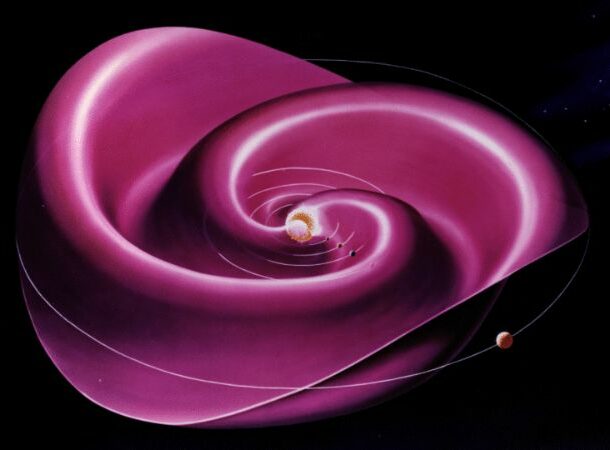 http://www.nasa.gov/press/2013/july/nasa-satellite-provides-first-view-of-the-solar-systems-tail/#.UgZDjT_an1l
http://www.nasa.gov/press/2013/july/nasa-satellite-provides-first-view-of-the-solar-systems-tail/#.UgZDjT_an1l If it was hard to wrap your head around our last item, the next one will make your head explode.
One decade ago, way back in 2013, NASA revealed that one of its missions successfully mapped our solar system’s tail, which just so happened to look like a four-leaf clover.
The “heliotail,” as they’ve come to call it, is made up of neutral particles that cannot be seen using traditional methods. As a result, specialized instruments were required to image the particles before scientists pieced the individual images together to create an integrated picture.
The image showed that our solar system’s heliotail expanded more than 8 billion miles (13 billion kilometers) beyond the most distant planets, with fierce winds causing material to stream in all directions at speeds of more than 1.6 million kph (1 million mph).
Mind blown.
If you enjoyed that fact, be sure to stick around to the final three on today’s list. We’ve outdone ourselves.
Will Saturn Actually Float In Water?
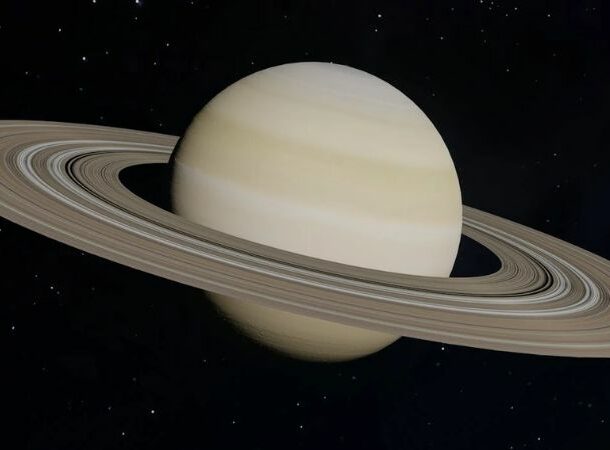 https://coolcosmos.ipac.caltech.edu/ask/113-Can-Saturn-really-float-on-water-#:~:text=Yes%2C if you could find,it can float on water.
https://coolcosmos.ipac.caltech.edu/ask/113-Can-Saturn-really-float-on-water-#:~:text=Yes%2C if you could find,it can float on water. Saturn has such a low density that if you put it in a large glass of water, it would float. Saturn’s density is 0.687 g/cm3, while water’s density is 0.998 g/cm3.
Since Saturn has a radius of 36,183.7 miles, I think you’re going to need a HUGE glass of water to test it out!
Leave Your Socks, Bring A Hat
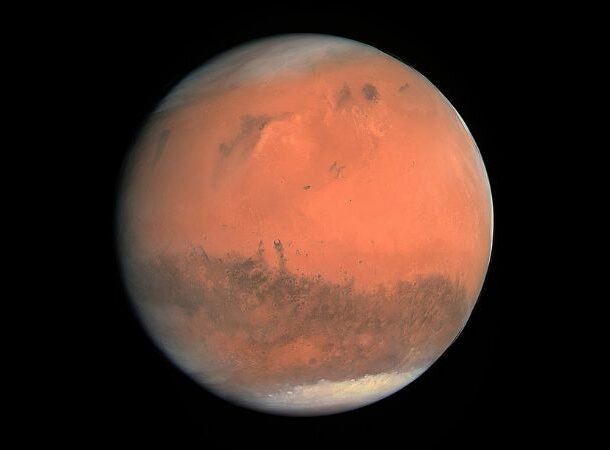 https://science.nasa.gov/mars/facts/
https://science.nasa.gov/mars/facts/ Mars, like Earth, has four seasons. However, unlike on Earth, where each season lasts three months, the length of Mars’ seasons varies depending on the hemisphere.
To provide some context, a Martian year has 668.59 sols, close to 687 Earth days, and nearly two times longer than an Earth year. Spring lasts seven Earth months in the northern hemisphere, summer six Earth months, fall 5.3 Earth months, and winter just over four Earth months.
Because the atmosphere is so thin, the Sun’s heat easily escapes. So, if you happen to find yourself near Mars’ equator at noon, it would be Spring at your feet (or about 75 degrees Fahrenheit)) and wintertime at your head (32 degrees Fahrenheit).
The Moon Is Lemon-Shaped
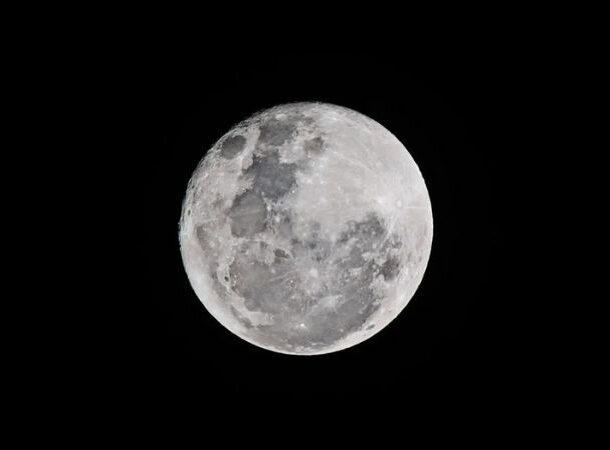 https://www.nbcnews.com/science/space/why-moon-shaped-lemon-scientists-explain-n169611
https://www.nbcnews.com/science/space/why-moon-shaped-lemon-scientists-explain-n169611 Did you know that the moon is shaped like a lemon? It’s not round at all.
Most moons and planets are created by revolving magma orbs, leading to their spheroidal shape.
Scientists believe that our moon was formed when an object more or less the size of Mars collided with the newborn Earth, expelling scorching material into space. As such, it should be round – yet our moon comes with strange bulges on its sides – and there lies the mystery.
The bulges are believed to have been formed before the moon’s 200 millionth birthday, when Earth’s gravity pulled on the moon’s magma, boosting the crust on the ends closest to and farthest from the Earth.
But the moon’s 6.7-degree tilt remained a mystery. The lemon’s points should have pointed directly at Earth when the bulge formed, but they are now 36 degrees off. According to research, the thickness of the cooling crust was irregular as the moon moved away from the Earth. The crust became crooked, tilting the moon’s axis to its current angle.
Space Cuisine
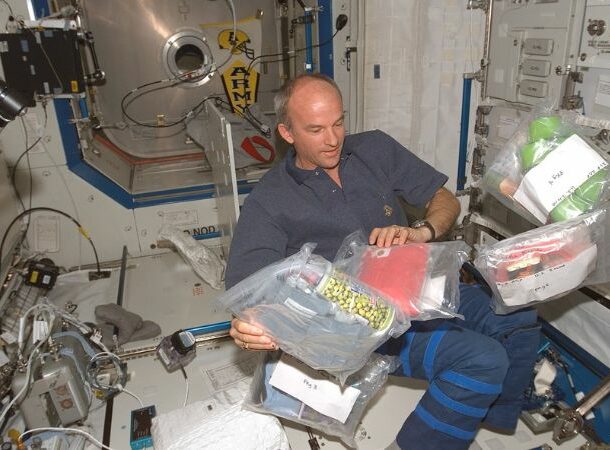 https://www.rmg.co.uk/stories/topics/what-do-astronauts-eat-space
https://www.rmg.co.uk/stories/topics/what-do-astronauts-eat-space Food on early NASA space missions was bland and tasteless, leaving some astronauts yearning for something more. So much so that a corned beef sandwich made its way onto one flight – which was a very bad idea as it fell apart in space and left the whole cabin full of crumbs.
Today, fresh fruit, water, and pre-packaged meals get sent to the ISS with an automated spacecraft, and it includes just about everything the astronauts desire.
Allergy Symptoms In Space
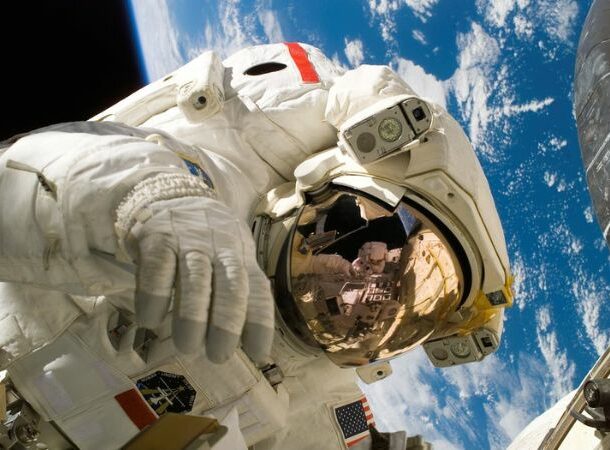 https://www.allergystandards.com/news_events/problem-dust-microbes-space/#:~:text=Research has shown that cell,allergy symptoms and persistent rashes.
https://www.allergystandards.com/news_events/problem-dust-microbes-space/#:~:text=Research has shown that cell,allergy symptoms and persistent rashes. You would think that an astronaut would be safe from his or her allergy symptoms in space, given that they breathe clean air. And yet, for many of them, the symptoms actually become worse.
New research shows cell activity changes in space, particularly during long missions. This and the repercussions of weightlessness and the emotional strain of space travel may explain why some astronauts have increased allergy symptoms.
We’ve Sent Spacecraft To Every Planet In The Solar System
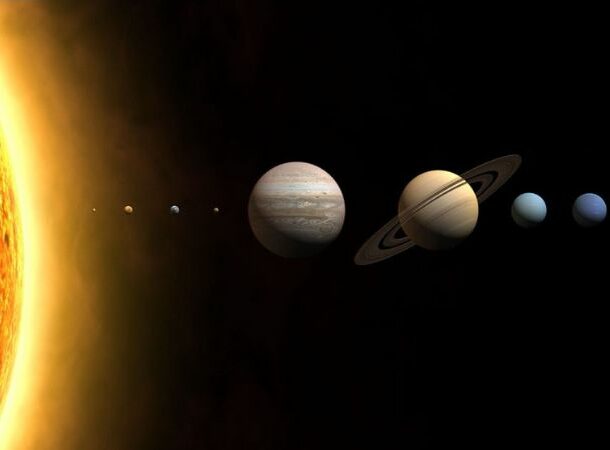 https://www.worldatlas.com/space/planets-we-have-sent-the-most-missions-to.html#:~:text=Although humans themselves have only,a small number of times.
https://www.worldatlas.com/space/planets-we-have-sent-the-most-missions-to.html#:~:text=Although humans themselves have only,a small number of times. I would have loved it if we actually set foot on other planets in my lifetime. But Mars might still be a possibility; let’s wait and see. We might make it yet, right?
While humans have never walked on any of the planets in our solar system other than the Earth and its moon, robotic spacecraft have visited all of them. And we didn’t stop there. Our spacecraft have also landed on several comets, asteroids, and dwarf planets.
In fact, some of them were visited more than once. So it’s a case of ” so near, yet so far” until we make more technological advances.
Mercury is Shrinking
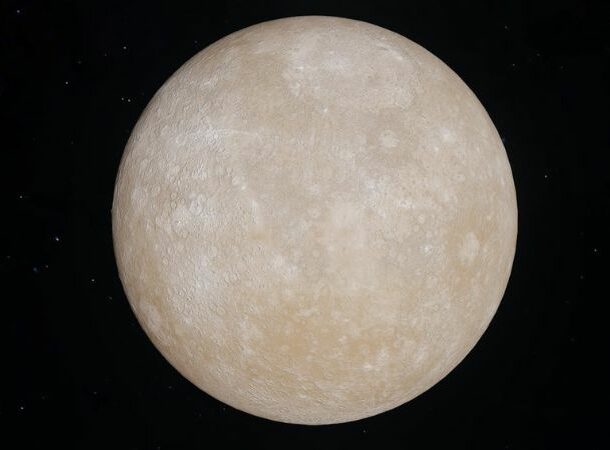 https://www.space.com/mercury-is-probably-still-shrinking-today
https://www.space.com/mercury-is-probably-still-shrinking-today Our ever-shifting tectonic plates shaped the planet. This process began approximately 3.3 to 3.5 billion years ago and led to the emergence of mountains, volcanoes, sea vents, and islands.
In contrast, the rest of our solar system appears to be pretty static: we have our rocky planets between the Sun and us, as well as a couple of massive gas giants behind us.
That’s why, in 2016, scientists were astounded to learn that data from the Mercury Surface, Space Environment, Geochemistry, and Ranging (MESSENGER) spacecraft showed that relatively harmless little Mercury is shrinking due to the same tectonic processes. In other words, it hasn’t finished forming in the 4.6 billion years since our Solar System formed. It makes you wonder what else we’ve missed.
Earth Is The Only Planet Where Water Can Be Present In All 3 States
 https://k12.libretexts.org/Bookshelves/Science_and_Technology/Earth_Science/08%3A_Earth's_Fresh_Water/8.02%3A_States_of_Water#:~:text=Water is the only substance,location or in a region.
https://k12.libretexts.org/Bookshelves/Science_and_Technology/Earth_Science/08%3A_Earth's_Fresh_Water/8.02%3A_States_of_Water#:~:text=Water is the only substance,location or in a region. And that’s what I call an insanely cool fact! I mean, water is life, is it not?
Water is the only substance that exists in all three states of matter on the planet – solid, liquid, and gas.
If you’ve been feeling a bit left out in the sphere of universal awesomeness, it might help to know that Earth is also the only planet where you will find large amounts or bodies of water in all three states. So yes, we might not have spring at our feet and winter in our hair, but our water definitely makes up for it.
Our Solar System Was Formed On A Rotating Disk Of Gas And Dust
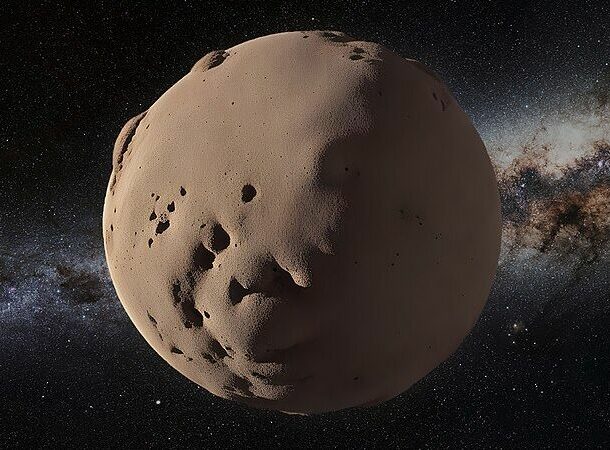 https://www.amnh.org/exhibitions/permanent/the-universe/planets/formation-of-our-solar-system#:~:text=The Sun and the planets,thin disk orbiting around it.
https://www.amnh.org/exhibitions/permanent/the-universe/planets/formation-of-our-solar-system#:~:text=The Sun and the planets,thin disk orbiting around it. About 4.6 billion years ago, a shock wave in the Milky Way Galaxy initiated the collapse of a solar nebula. The debris cloud solidified into bodies. The Sun formed in the center, and the larger bodies, stars, and the beautiful blue rock we call home formed in a thin disk orbiting it.
But what triggered it all?
That catalyst, according to isotopes found in ancient meteorites, was a supernova. And if a supernova jolted our solar system into existence, supernovae could be spawning new solar systems all over the universe.
Our Most Distant Solar-Powered Explorer
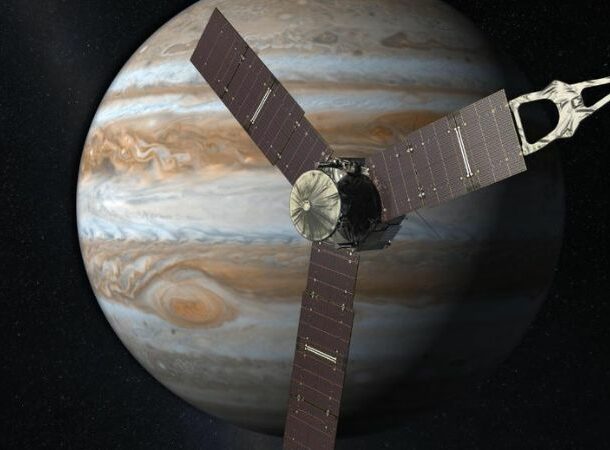 https://www.nasa.gov/missions/juno/nasas-juno-finds-changes-in-jupiters-magnetic-field/
https://www.nasa.gov/missions/juno/nasas-juno-finds-changes-in-jupiters-magnetic-field/ If you were looking for something incredibly cool in space, you’ve found it.
NASA’s billion-dollar Juno spacecraft was launched on August 5, 2011 and arrived at its destination, Jupiter, on July 4, 2016. With a maximum velocity of 165,000 mph (266,000 kph), it is still the fastest man-made object ever created.
It has sent back a treasure trove of images and new scientific Jupiter data – over three terabits worth – during its 35 Jupiter orbits, all processed by citizen scientists using NASA’s first-ever camera devoted to public outreach.
The solar-powered Juno will keep investigating our solar system’s largest planet until September 2025 or until it reaches the end of its life.
Space Is Not That Far Away
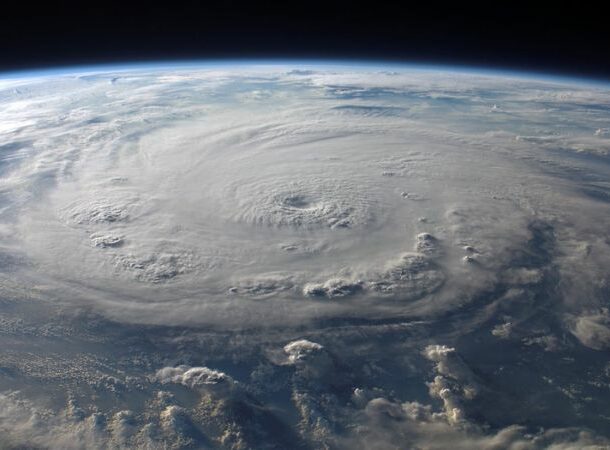 https://www.space.com/karman-line-where-does-space-begin#:~:text=The%20K%C3%A1rm%C3%A1n%20line%20is%20a,depends%20on%20who%20you%20ask.
https://www.space.com/karman-line-where-does-space-begin#:~:text=The%20K%C3%A1rm%C3%A1n%20line%20is%20a,depends%20on%20who%20you%20ask. We’re not talking about how close we are to the possibility of commercial space travel. No, we’re talking about the Kármán Line, which defines how little atmosphere there is between the Earth we breathe, talk, walk, and eat on – and where exactly space begins. If it’s something you’ve been dying to know – I can tell you now you’ll be shocked to hear how near it actually is to us. If you could get in your car and take a vertical drive into the sky at 60 mph, you would be in space in less than an hour and a half.
That’s right, space is only 62 miles (about 99 km) from where you are sitting or standing at this moment. Imagine that was your morning commute.
Felix Baumgartner, the crazy daredevil sponsored by Red Bull and GoPro, currently holds the world record for the highest space jump after he leaped from a stratospheric balloon 24 miles in the air. He only needed 90 minutes to get up there. And, thanks to the magic of gravity, his free fall lasted a mere 3 minutes and 48 seconds before he had to deploy his parachute. How about that!



























